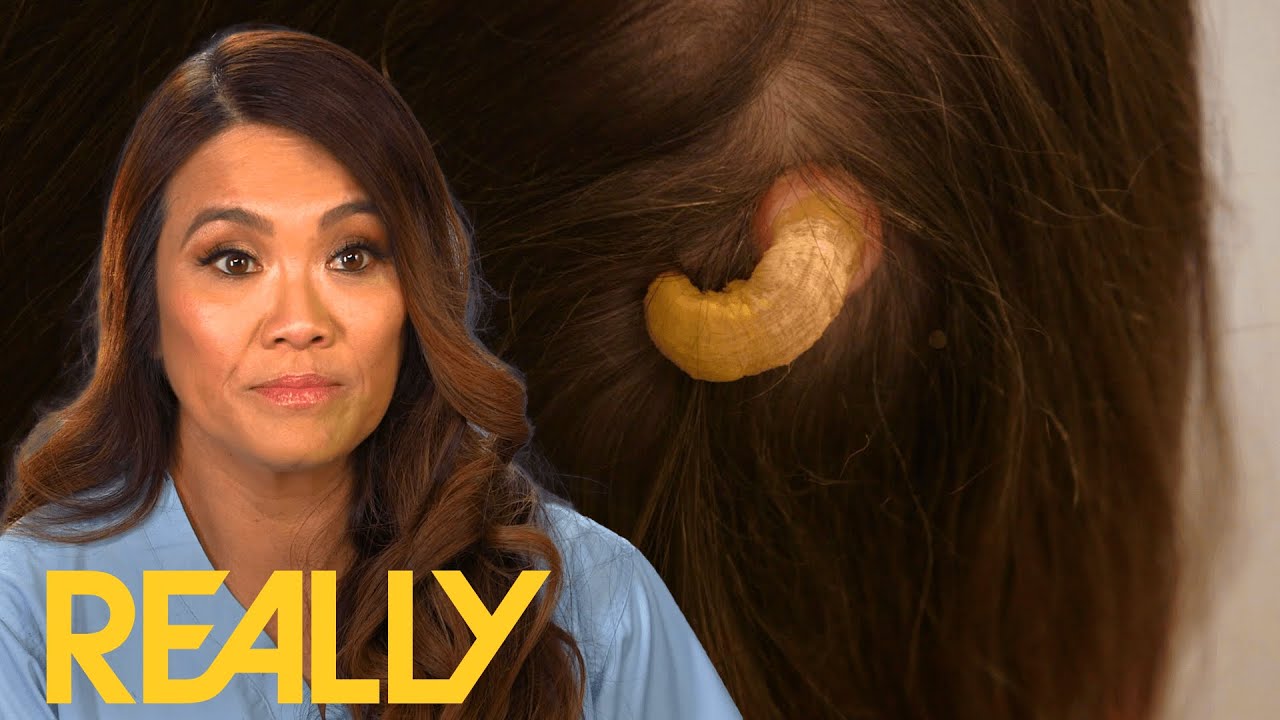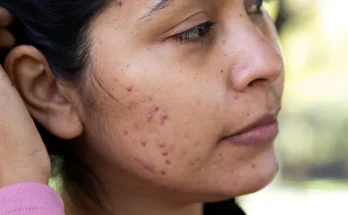
Dr. Pimple Popper Removes A Potentially Cancerous Horn from a Woman’s Head
While the image of humans growing horns might seem like a science fiction scenario, some individuals are experiencing the development of bony growths at the back of their skulls, often referred to as “horns”. These growths, also known as enthesopathies or insertional tendinopathies, are essentially bone spurs caused by chronic stress on the tendons and ligaments at the base of the skull.
-
Poor Posture:
The primary driver appears to be the forward head posture adopted when using digital devices (phones, tablets, etc.). This posture shifts weight from the spine to the muscles and tendons at the back of the neck, causing the bone to respond by growing.
-
Tendon and Ligament Stress:
The constant pulling of tendons and ligaments at the back of the head to maintain a neutral head position leads to the bone thickening and forming spurs at the attachment sites.
The term “horn” is used because the bony growths can sometimes resemble horns in their shape and size. Some individuals have developed growths large enough to be visible, even under hair.
While the growths themselves are generally benign, they are a sign of chronic stress on the musculoskeletal system. The underlying cause, poor posture and the resulting muscle strain, can lead to other issues like headaches, neck pain, and restricted movement.
-
Improve Posture:Practicing good posture while using digital devices and throughout the day is crucial.
-
Strengthen Neck Muscles:Exercises to strengthen the neck and upper back muscles can help support proper posture and reduce strain.
- Take Breaks:
Regularly taking breaks from prolonged device use to stretch and move around can help alleviate stress on the neck and back.
A cutaneous horn is a growth on the skin that occurs due to excessive keratin growth. A cutaneous horn has numerous possible causes, ranging from skin infections to cancer.
Cutaneous horns are lesions that develop on the skin from an overgrowth of keratin. This is the protein responsible for making hair, nails, hoofs, and horns. An overgrowth of this protein is called hyperkeratosis.
The lesions usually develop in areas frequently exposed to the sun. About 60%Trusted Source of all cutaneous horns are benign, while others are cancerous or precancerous. Because of this, anyone who develops a cutaneous horn should seek medical attention.
Below, we explore the causes and risk factors for cutaneous horns, as well as how to identify one and when to contact a healthcare professional.
Cutaneous horns develop from excessive keratin growth on the skin, particularly in very sun-damaged areas. The growths may be harmless, precancerous, or cancerous. There may be an underlying cyst, though this is extremely rare.
Because cutaneous horns tend to develop in areas often exposed to the sun, particularlyTrusted Source on the face and hands, they may relateTrusted Source to high levels of UV radiation.
While anyone can develop a cutaneous horn, people with a greater risk include:
- people with a human papillomavirus (HPV) infection
- older adults
- people with high levels of sun-damaged skin
In terms of cancer risk, cutaneous horns on the face are more likely to be cancerous or precancerous than those elsewhere on the body. And the risk of malignancy increases with the size of the horn.

A doctor can often diagnose a cutaneous horn based on its appearance alone:
- The horn-like growth on the skin’s surface is typically brownish-yellow and curved.
- The growths usually appear on the face, hands, forearms, or ears.
- The surrounding skin may be unchanged or slightly thickened.
- The growth is usually a few millimeters or centimeters long or twice as long as the base is wide.
- Rarely, cutaneous horns can grow much larger.
- Rarely, more than one of these growths develop in a group.
Most cutaneous horns cause no other symptoms. However, when a horn is damaged, there may be pain or an infection.
Anyone who may have a cutaneous horn should schedule an appointment with a healthcare professional to have it evaluated for skin cancer.
People who already have a cutaneous horn diagnosis should contact a doctor if any of the following symptoms develop:
- pain
- an increase in the size of the horn
- redness, purple, or brown skin hues at the base of the horn
- the horn becoming wider than it is tall
- hardening or puckering of the surrounding skin
The changes above can indicate that the horn may have become cancerous.
Doctors associate a range of health issues with cutaneous horns.
Many of these health conditions are noncancerous, including nevi, seborrheic keratoses, viral warts, viral skin infections, and psoriasis. The latter two require medical treatment, while the others are benign.
Another growth, called a keratoacanthoma can develop from a cutaneous horn, though this is rare. This type of growth is relatively common and often benign. It is dome-shaped and can grow up to 3 centimeters in diameter. Older people, people with lighter skin, and those with sun damage have a higher risk.
A doctor may recommend surgical removal to reduce the risk of a keratoacanthoma becoming malignant, as it can resemble squamous cell carcinoma, a type of cancer.
Below, we describe the more serious conditions related to cutaneous horns that are either cancerous or precancerous.

Cutaneous horn squamous cell carcinoma
Squamous cell carcinoma is the most common skin cancer that can occur with a cutaneous horn. It develops in about 94%Trusted Source of all malignant cutaneous horn cases.
There may be a greater risk of developing squamous cell carcinoma, particularly if the cutaneous horn is larger and painful, discolored, and wider at its base.
On lighter skin tones, this discoloration may appear pink or red. On darker skin tones, this discoloration may be purple-hued, gray, dark brown, or darker than the surrounding area.
A cutaneous horn can also present as an early version of this cancer, known as Bowen’s disease or squamous cell carcinoma in situ.
Cutaneous horn basal cell carcinoma
A more rare type of cancer associated with a cutaneous horn is basal cell carcinoma. Risk factors include excessive exposure to the sun or ionizing radiation, which can comeTrusted Source from X-ray or CAT scan machines.
Age, genetics, weakened immune system, and existing scarring may also increase the risk.
Cutaneous horn melanoma
A doctor usually orders a biopsy to determine whether a cutaneous horn is malignant. This involves taking a sample of the horn, including a piece of the base.
Cutaneous horn removal
In some cases, a doctor recommends removing the entire horn. This is especially important when malignancy is a significant concern.
In the process, the doctor takes a biopsy to check for any indications of cancer. It is rareTrusted Source for a doctor to be able to rule out malignancy without a biopsy. For this reason, a doctor will almost always request a biopsy for the horn.
Never try to remove a cutaneous horn at home. A healthcare professional needs to remove it in a clinical setting.
Additional treatment options
It is important for a doctor to determine whether a cutaneous horn is benign or potentially harmful with a biopsy before any destruction of the horn.
Anyone who then wants to have a benign growth destroyed for cosmetic reasons might consider laser therapy or electrocautery, which involves a healthcare professional using heatTrusted Source to destroy the horn’s tissue.
However, having the horn removed by a doctor is still the most commonTrusted Source choice.
Once a doctor removes a cutaneous horn, the outlook is usually goodTrusted Source, even when the growth was cancerous. Most people do not need further treatment after the removal.
However, if basal cell or squamous cell cancer was the horn’s underlying cause, a person needs to have regular screening to determine whether the cancer has returned.
Cutaneous horns are hard, brownish-yellow growths on the skin. They develop due to an excessive production of keratin, a protein that also forms the hair and nails. Cutaneous horns may be benign, precancerous, or cancerous.
About 40%Trusted Source of all cutaneous horns are malignant, and the most common associated skin cancer is squamous cell carcinoma.
For this reason, anyone who may have cutaneous horns should contact a doctor for a biopsy to determine whether the growth is cancerous.
After the doctor removes the growth, most people do not need further treatment, though they may need regular screening to determine whether the cancer has returned.


